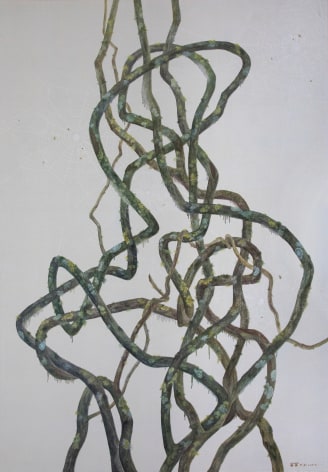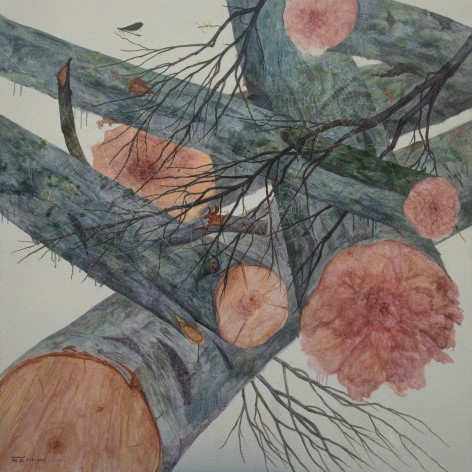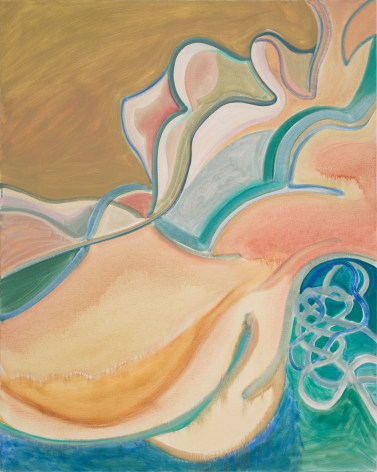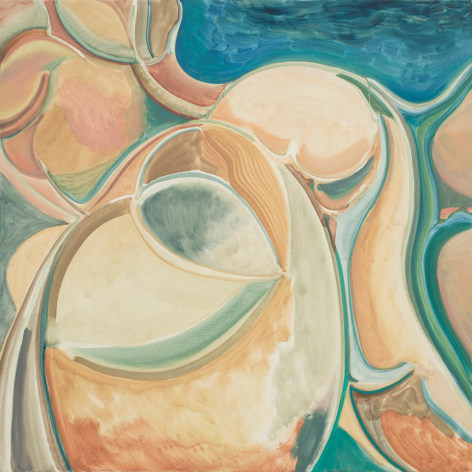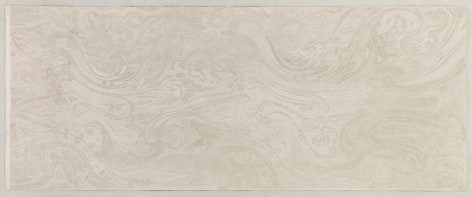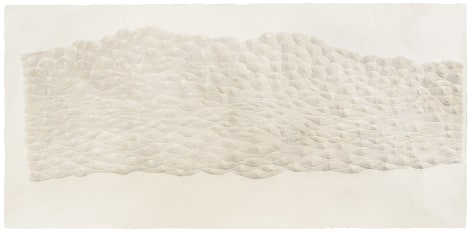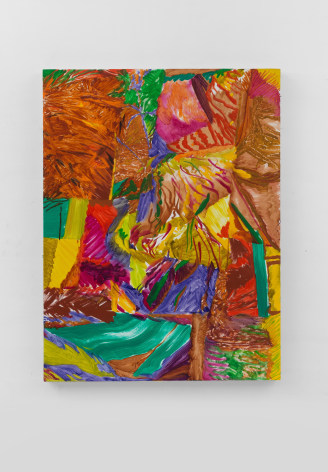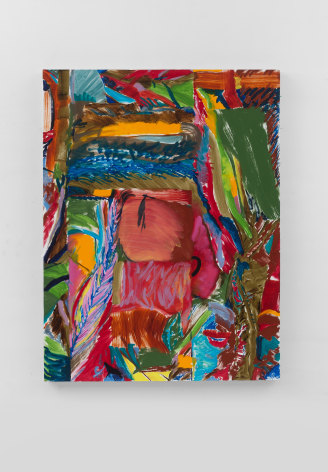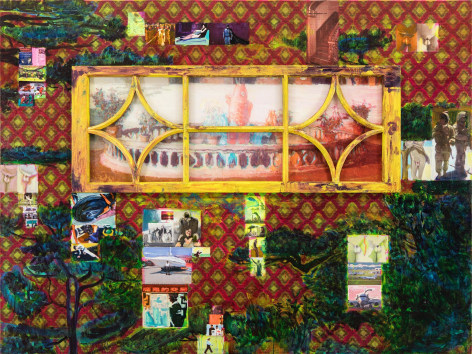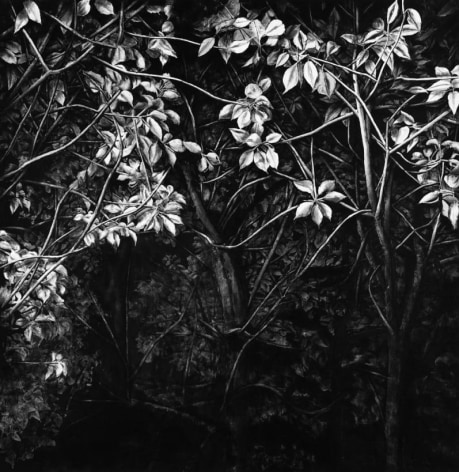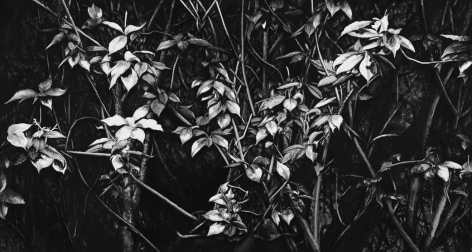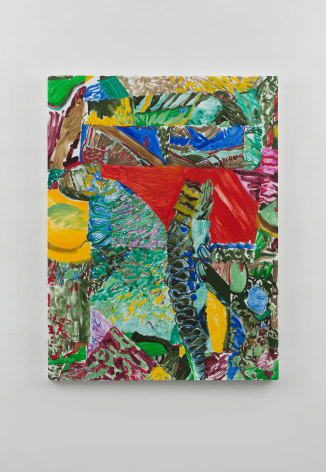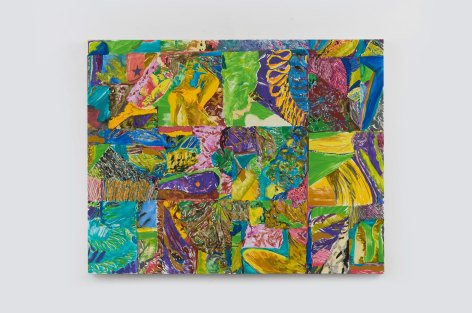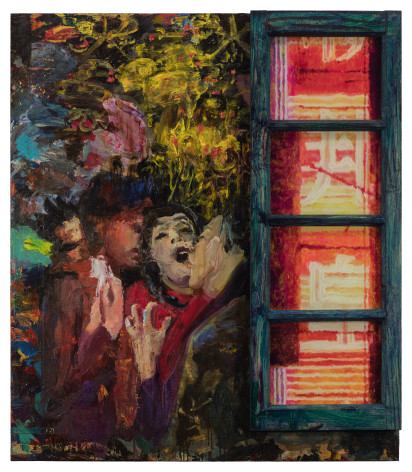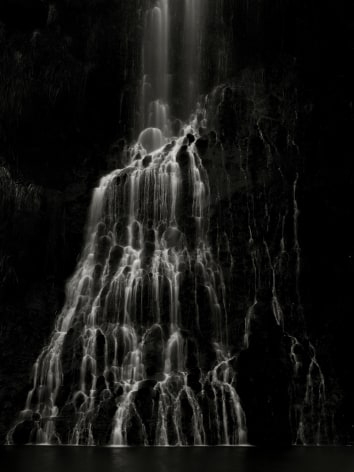Against the Stream:Fu Xiaotong, Guo Hongwei, Li Qing, Wu Didi
Chambers Fine Art is pleased to announce the opening on February 23, 2019 of Against the Stream: Fu Xiaotong, Guo Hongwei, Li Qing, Wu Didi. These four artists have all previously worked with the gallery, and have each developed a unique artistic style in his or her own creative field. With changes in global political, economic and cultural environment, artists are facing with challenges from various directions, and yet conquering these obstacles through hard work and self-discovery.
Since 2010, Fu Xiaotong (born 1976) has been evoking vast mountain ranges through an extraordinarily labor-intensive technique, excavating Xuan paper with a needle many thousands of times. Different from her earlier landscapes, the large-scale work Reincarnation presented in the current exhibition not only displays sophisticated and abstract forms, but also reveals her references to the elements and forms from ancient Chinese murals. Inspired by murals from the Han Dynasty, patterns of dragon and phoenix, sacred animals, and restless waves weave an intricate image of reincarnation. The artist has integrated her contemplation of life as well as respect for traditional Chinese art into the work. Similar to Fu Xiaotong’s attention to detail, Wu Didi’s (born 1976) paintings often thematically revolve around bamboo, mosses, overgrown logs and green vines, revealing on canvas the vitality of life in the natural world in a respectful manner. In her works, symbolism has become an understated yet powerful reality. For example, in her most recent works, nearly hidden spider webs can be found within a pile of old wood logs, signifying the vitality of life while magnifying the visual pleasure and imaginary space embodied in the work.
Guo Hongwei (born 1982) has long been observing reality and nature from his uniquely acute perspective, and is known for using his unique watercolor and oil painting techniques to reveal the reality and nature of objects. In his newest series The Origin of Landscape, presented for the first time in this exhibition, he deconstructs seemingly realistic landscapes in an improvisational manner. Utilizing his exquisite painting skills, this new body of work in fact reveals Guo Hongwei’s new exploration in abstract painting. In contrast to Guo Hongwei’s approach of creating multi-dimensional space on a two-dimensional surface, Li Qing’s (born 1981) Neighbour's Window series present window “views” by combining paintings with actual windows, reclaimed from old buildings in Shanghai and Hangzhou. These old and worn-out windows are touched up and, fitted with new panes of plexiglass, directly upon which Li paints, creating his ‘views’ of the outside. The windows become part of the work, physically connecting spaces of different dimensions. In Neighbour's Window• Emperor, sections of the window are cleverly re-arranged into neon billboards. The drastic contrast between the plain and rustic window and the busy and flashy night scene, forms two distinct cultures and identities, naturally leading viewers to associate it with the current Chinese society.
《溯洄:付小桐、郭鸿蔚、李青、吴笛笛》
前波画廊北京荣幸地宣布将于2019年2月23日起举办群展《溯洄》,参展艺术家包括付小桐、郭鸿蔚、李青和吴笛笛。四位艺术家曾先后与画廊合作,且都在各自的创作领域形成了独特的艺术风格。随着世界政治经济文化大环境的改变,艺术家也面临着各种挑战,在逆境中成长不断自我磨练和探索。
自2010年开始,付小桐(1976年)便一直运用传统的针刺技术与加厚的宣纸结合进行创作,她通过数以万计朝着不同方向的针孔,在宣纸表面堆积出若影若现的图像。与其早期直接的山水风景表现不一样,此次展出的巨幅《轮回》不仅在直观上呈现出繁复而抽象的形态,同时也可以看到艺术家援引自古代壁画的元素和形式。那些出自汉代壁画中原始的龙凤及神兽图式和翻滚的海浪循环往复交织成一幅轮回图,艺术家将其对生命状态的理解和对中国古代艺术的敬仰融入了作品中。同样细致入微的吴笛笛(1976年)的绘画主题则包括自然中的修竹、青苔,枯木、青藤等,以虔诚的态度和绘画的方式在画布上重现自然界中因微小而被忽视的生命力。她的作品中,象征的力量成为一种隐晦但却强劲的存在,例如其最新作品表面所隐藏着的一层浅浅的蛛网与画面中的主体相得益彰,将画中所承载的视觉趣味和想象空间重新放大。
郭鸿蔚(1982 年)一直以其敏锐的视角观察现实和自然,擅用其风格独特的水彩和油画的方式来揭示物象的真实和本质。展览中的最新系列《风景的本源》以即兴绘画的方式归纳和抽离真实风景,同时融入其绘画经验,显示了郭鸿蔚在抽象绘画领域的新探索。与郭鸿蔚在平面上塑造多层次空间的方式相比,李青(1981年)的《邻窗》系列常以绘画和窗子实物结合以构筑出一幅隔窗的景观。这些老旧而斑驳的窗户被他重新处理运用到画面里,成为画面的一部分并连接着多维空间。在《邻窗·邦皇》中的老窗被巧妙地安排成了都市霓虹广告牌,它的质朴与画面中浮华的都市夜景之间形成了两种迥然的文化和身份,这种差异不禁让人自然地联想到当今中国社会现实。
作为女性艺术家,付小桐和吴笛笛在她们的创作中并没有刻意地强调自己的性别,然而可以透过她们的创作手法和作品的细腻程度感受到女性的缜密和敏感,随着创作方式的不断摸索,这种缜密和敏感在她们的最新作品中也变得愈加明晰,并有力地增强了作品的观念含义;随着科技和新媒体技术的愈加发达,绘画作为一种传统媒介,其笔触和颜色所创造的无限可能也正面临着考验,郭鸿蔚和李青在各自的艺术探索中巧妙地融入个人经验和感受,从容地继续各自的绘画创作。

